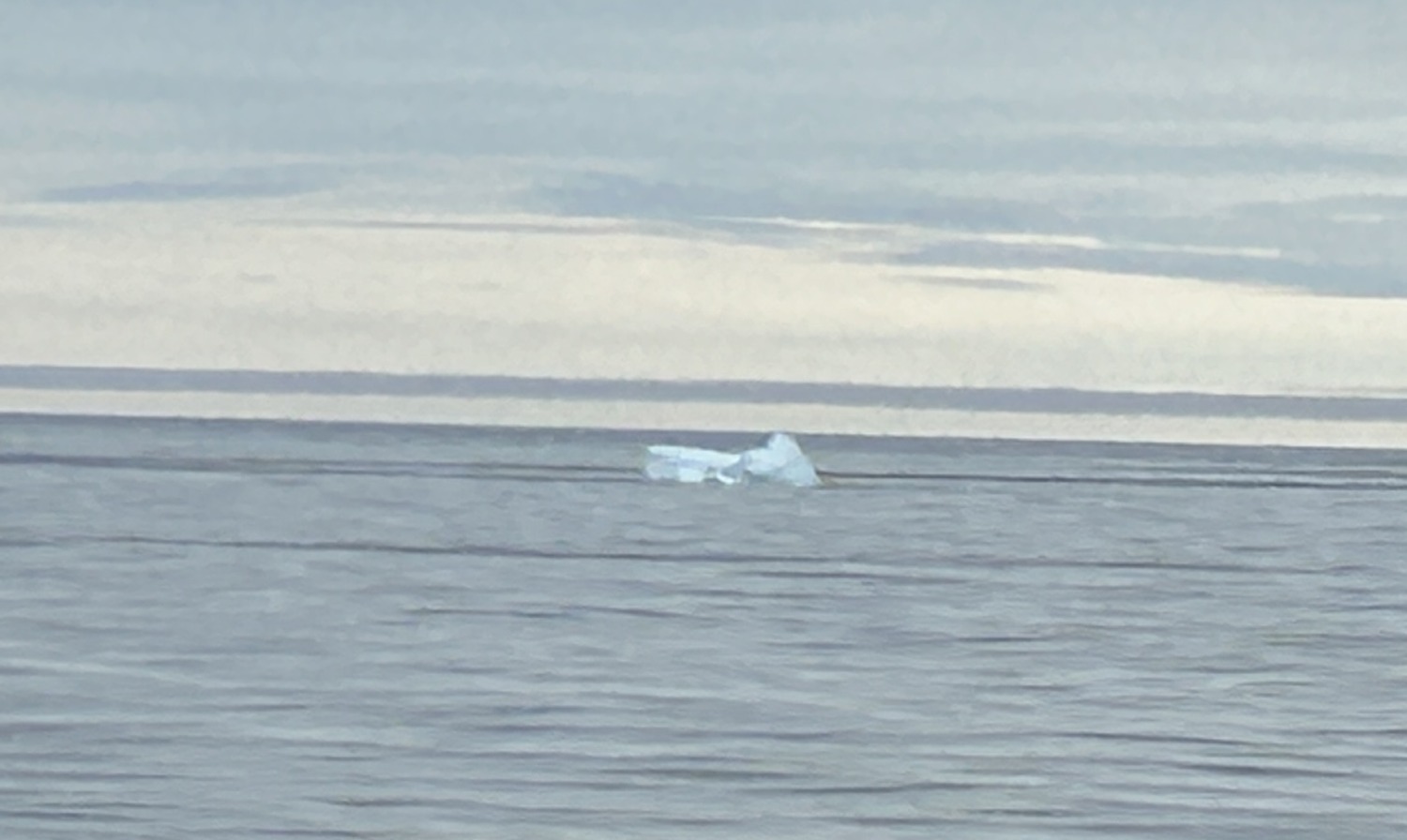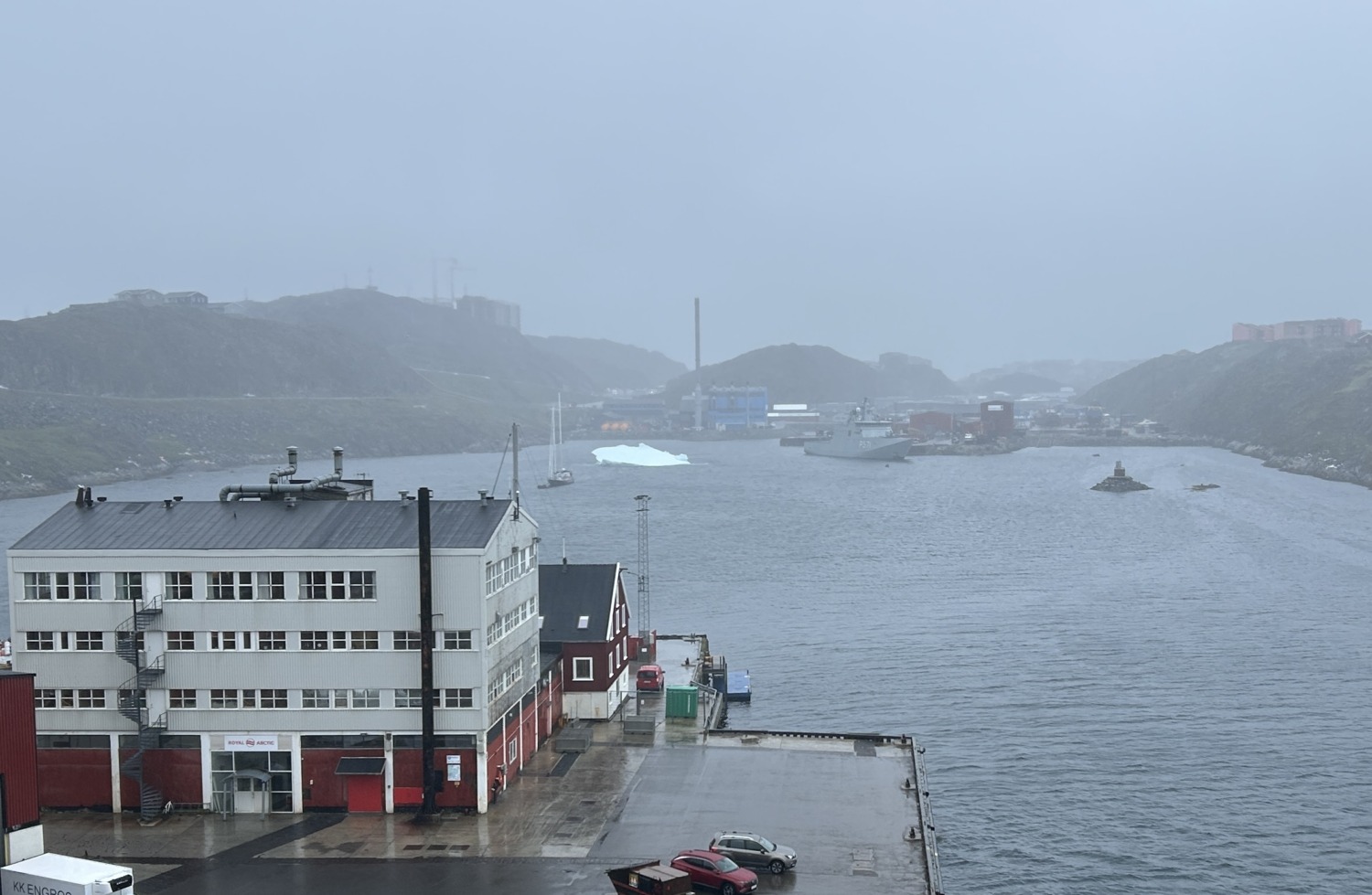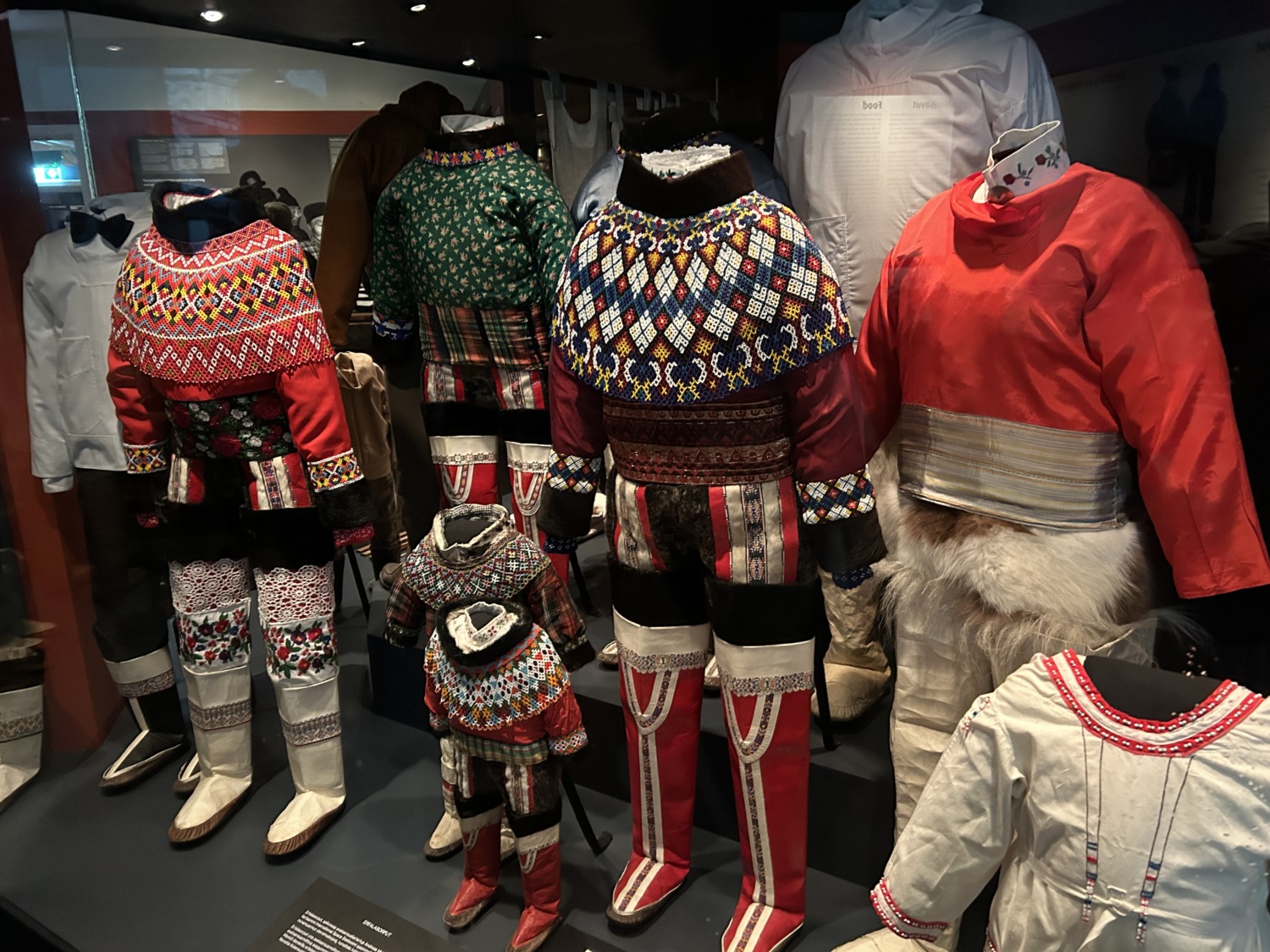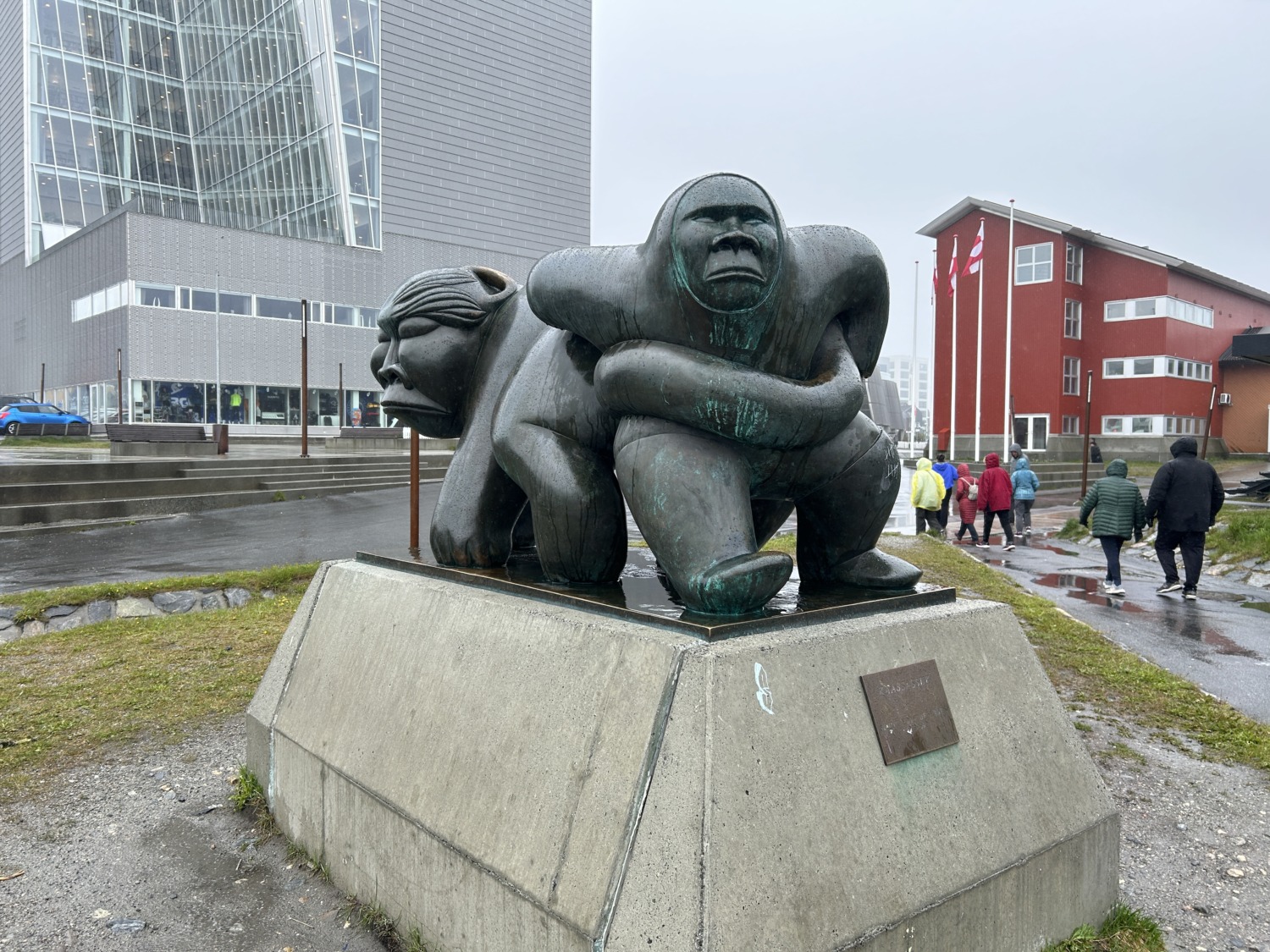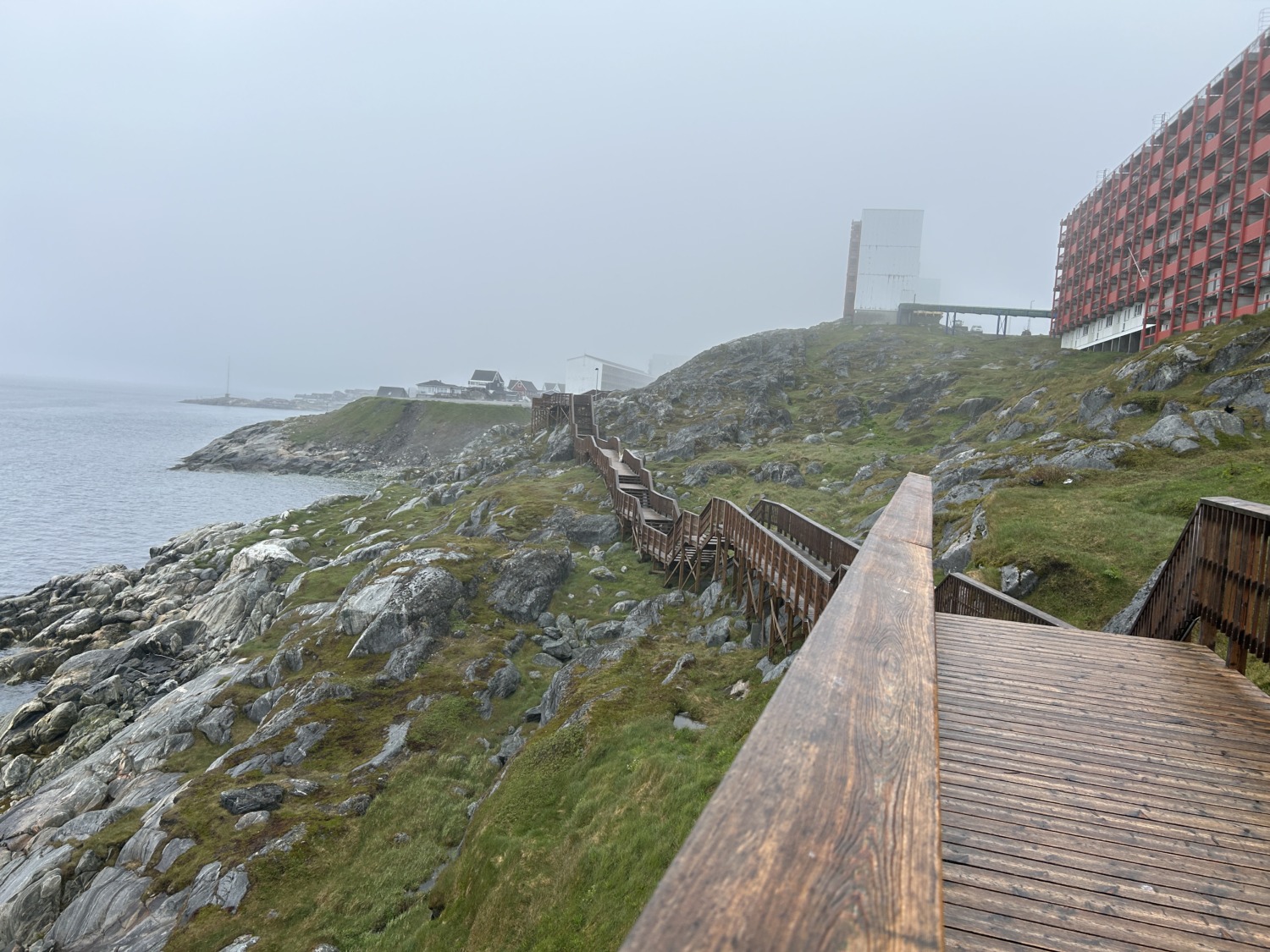Nuuk was our only port in Greenland. It wasn’t on the itinerary at all when we signed up for this cruise. We were supposed to stop at two other places on the southern shore of Greenland. But both of those places had too much ice for our ship to safely sail close to them. Nuuk was ice-free, so they rearranged our itinerary.
When our ship left Iceland, we had two ice pilots from Greenland onboard. They are people who are specially trained in recognizing ice conditions, spotting icebergs, and navigating safely through icy waters. We also sailed at a reduced speed, so we could avoid any icebergs that were spotted.
As we grew closer to Greenland, we saw more and more icebergs. We soon learned to spot them because they are amazingly white. The ocean is gray and the sky was gray, but the icebergs glow a bright white. You can really notice it in this picture of a small iceberg in Nuuk harbor – it is the thing that looks like a hole in the picture. So white it is almost unreal.
Because Nuuk was not our original destination, we had to wait our turn to dock. There is only one large dock in Nuuk. Another cruise ship had booked the port for July 9 and we were booked for July 10. But a cargo ship had also scheduled a brief stop (six hours) from 6 p.m. to midnight on July 9. Even though we arrived in Nuuk about 5 p.m. on July 9, we had to wait our turn. The ice pilots guided us through the Nuuk fjord for some gorgeous scenic cruising. Mountains on either side, covered with snow.
Our ship was cleared by security at 8 a.m. on July 10 and we were able to go ashore. It was 40 degrees and raining with rain predicted for the whole day. The kind of day that Tom and I usually prefer to spend indoors. But it was our only day in Greenland, so we were determined to get out and see what we could.
Nuuk may be the capital of Greenland, but it isn’t very big. The entire country only has 57,000 people and Nuuk has 20,000 of them. Greenland was settled by the Inuit people, but there were significant numbers of Norwegians in the 12th through 15th centuries. Followed by Danish colonial rule beginning in 1728. As is usual with colonial rule, the Danes ruled and the Inuit served.
The Danes treated Greenland, and the Inuit, with a policy called absolutism. The Inuit were not allowed to leave and no one, absolutely no one, was allowed to go into Greenland without express permission of the Danish government until 1950. 1950! I find it amazing that Denmark kept Greenland closed off for so long. Greenland became an autonomous territory of Denmark in 1979. This means they make most of their own decisions but still recognize the Danish monarchy. The primary language of Greenland is Greenlandic, which is Inuit. Danish is second and English is third. The currency of Greenland is the Danish krone.
Today Nuuk is a modern city, although small. Young people see it as a place of opportunity. Greenland is 90% Inuit, or Danish-Inuit-Norwegian, so it is the most integrated of any country with a significant indigenous population.
Tom and I had a late start to our morning. We knew we would have plenty of time to see Nuuk and we were hoping that the rain would stop as the day wore on. It did not. We rode the shuttle into town about 10 am and decided to enjoy our day, despite the weather. The shuttle dropped us off at the Cultural Center and Tom and I headed to the furthest point we felt we were likely to go: the Church of our Savior.
The Church of Our Savior was built in 1849, and the tower was added in 1884. The red building with its steeple is a prominent site on the landscape. The church received the status of Nuuk Cathedral in 1994, when the first bishop was Kristian Mørk, followed in 1995 by Sofie Petersen, a native of Greenland. The Church of our Savior is part of the Lutheran Church of Denmark.
Unfortunately the church was closed, so we could not go inside. Instead, we climbed the hill next to the church to look at the statue of Hans Egede. Egede was the Danish missionary who founded Nuuk, so it was appropriate that his statue was next to the church. By this point we were dripping from the rain, so we decided to go to a museum and dry off.
The only problem was finding it. Nuuk doesn’t really have a tourism industry and they aren’t particularly concerned with signs that will help people find things. We climbed up the hill and went down a couple of roads without seeing it. Finally we stopped in at a native art shop and they told us what to look for. Go down the hill toward the coast and it is the white building. It was easy to find once we knew what we were looking for.
The National Museum of Greenland was very interesting. They did an excellent job of explaining how all the people arrived on the island and how they interacted with each other. There was a building on Inuit history before the Norwegians. Another on the Norwegian settlements and why they ended. Another on the Danish colonization and Inuit life under Danish rule. There were lots of artifacts for all of the cultures, including some mummies that were found in an ice cave. All of the displays were in Greenlandic and English, which was useful to us and the other tourists from our ship.
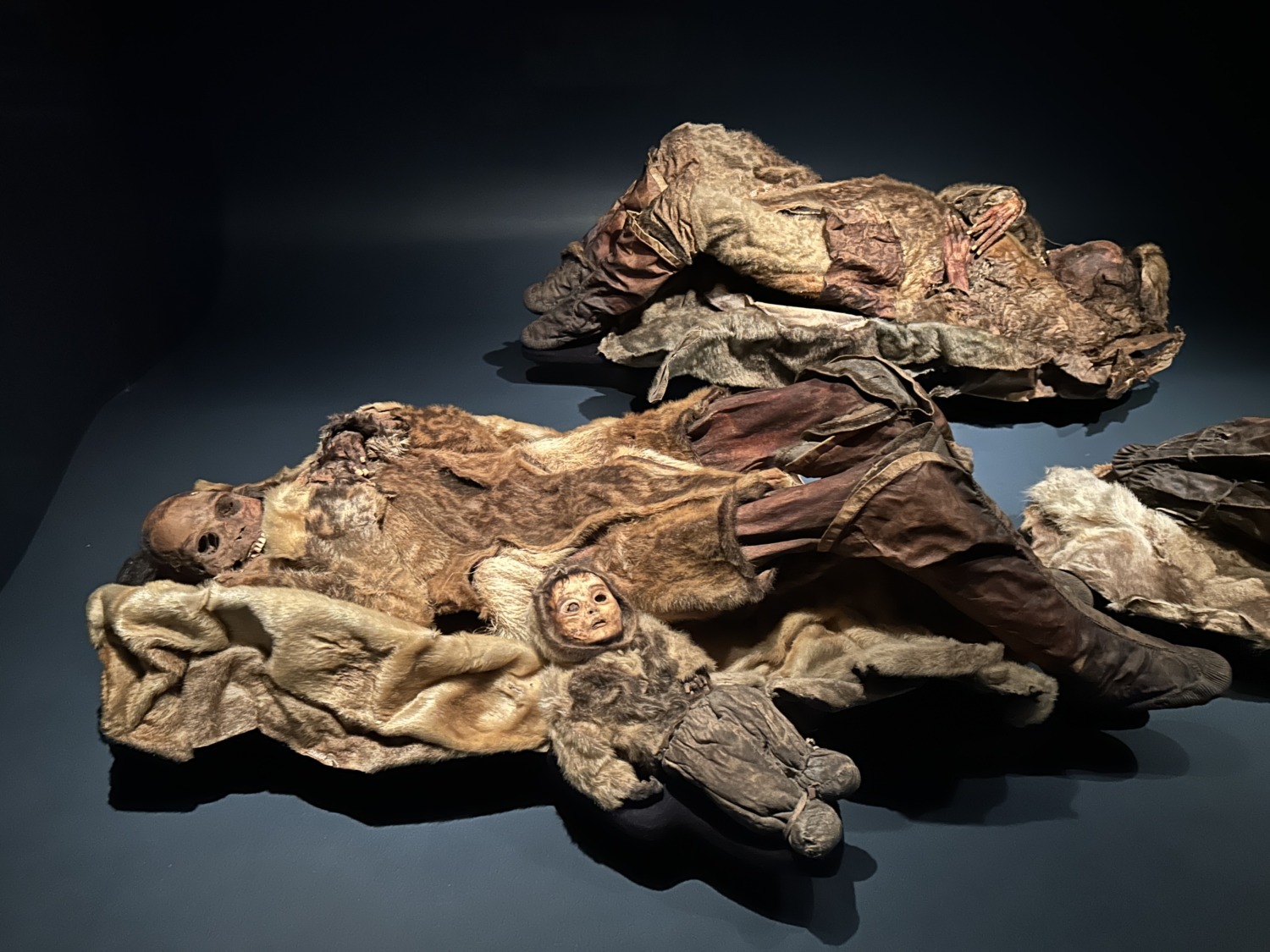
After enjoying the museum, Tom and I had lunch at a pizza and burger place in the Nuuk Center, a small shopping mall. Two young men sat next to us. When they got their meal, I had to ask them about it. It was a huge pile of french fries with a bunch of sausage pieces on top and a mayonnaise-mustard dipping sauce. They told us it was Makkaraperunat and said it was delicious.
We started talking and they told us about their experience of life in Nuuk. They were both from more rural areas but had come to Nuuk for the job opportunities and to study at the University. They were looking forward to hunting season for moose and musk ox. Any citizen of Greenland can get a license for hunting moose, musk ox, seals, whales, walruses, etc. But they have to use it personally and not for commercial gain. It continues the traditions passed down through centuries of Inuit hunting.
Their English was excellent and they also spoke Danish and Greenlandic. I asked them if it ever got warm. They said it usually got up to 70 in August and a couple of weeks in September. But when it got warm, the mosquitoes and biting flies came out. So the warm was a trade-off. I asked if it ever stopped raining, and they said yes, when it started snowing. Then it snowed for eight months. Sounds like a hard place to live.
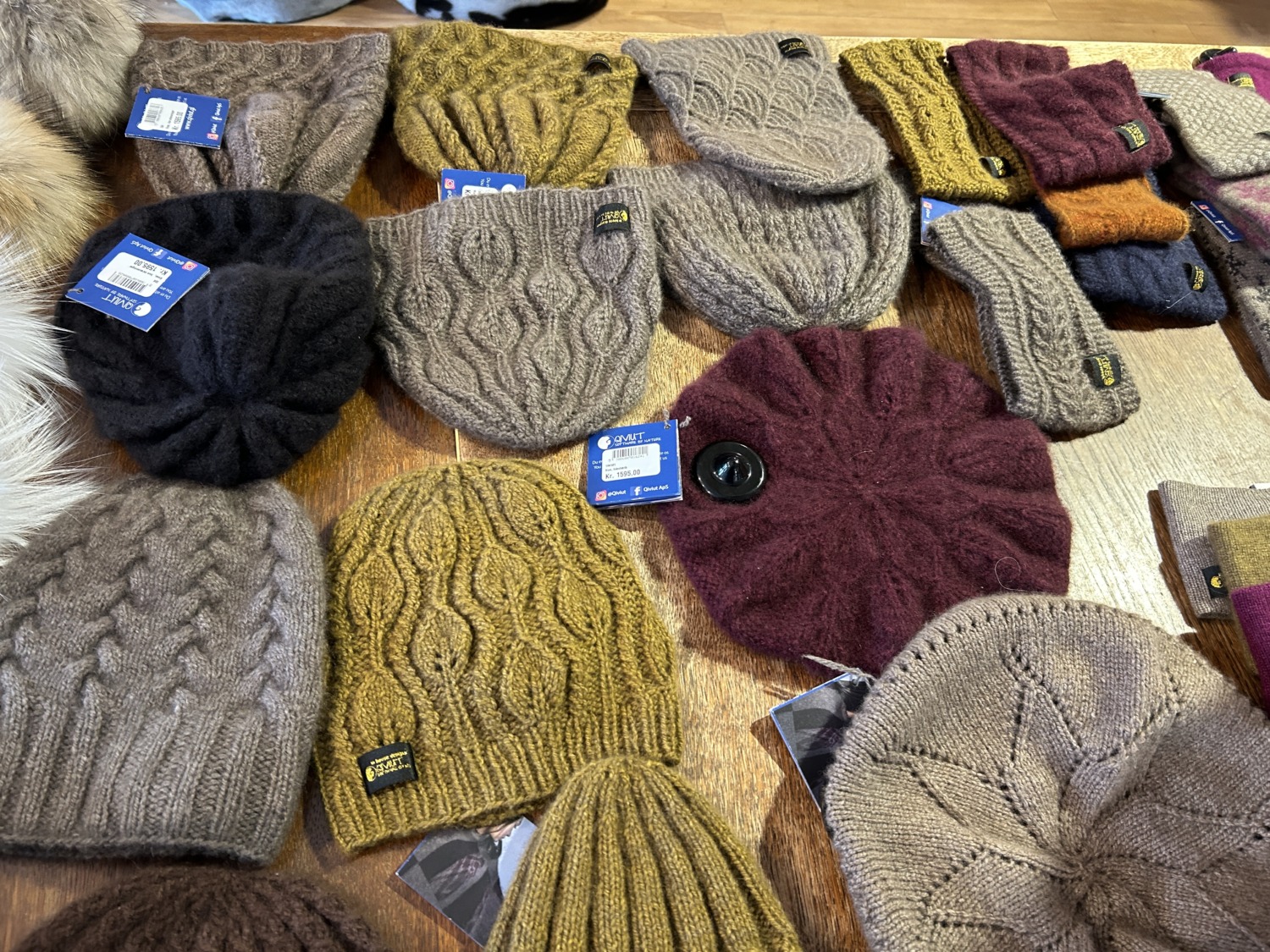
After lunch, Tom and I went in search of souvenirs. As I said, Nuuk is not really set up for tourists. We found the Qiviut shop, which sold items made out of qiviut, the fur of the musk ox. When the inner coat is spun, it is the softest, lightest, and warmest yarn. But it is also very expensive. I splurged on two skeins to make a lacy scarf. The young woman at the register asked if we wanted to know what that charge was in US dollars, and Tom and I both said no. It will be the most expensive scarf I have ever knitted. My souvenir from Greenland.
We asked several people about souvenir shops in Nuuk – we wanted the really tacky tourist stuff. Shirts and key chains and a spoon. But the only thing we could find were exquisite tusk carvings, Inuit art, and items made from qiviut. Beautiful and unique but also expensive. Not the sweatshirt Tom was hoping for. We went to five different shops and saw some gorgeous things, but not the kinds of souvenirs we were looking for.
Tom and I finished our day with a walk along the boardwalk next to the ocean. I would like to say it was beautiful, but between the rain, the fog, and the general grayness, it wasn’t. Still, it was an interesting visit to Greenland and we learned a lot. I would never choose to live in such a challenging place, but I enjoyed talking to the people who are making Greenland their home.

